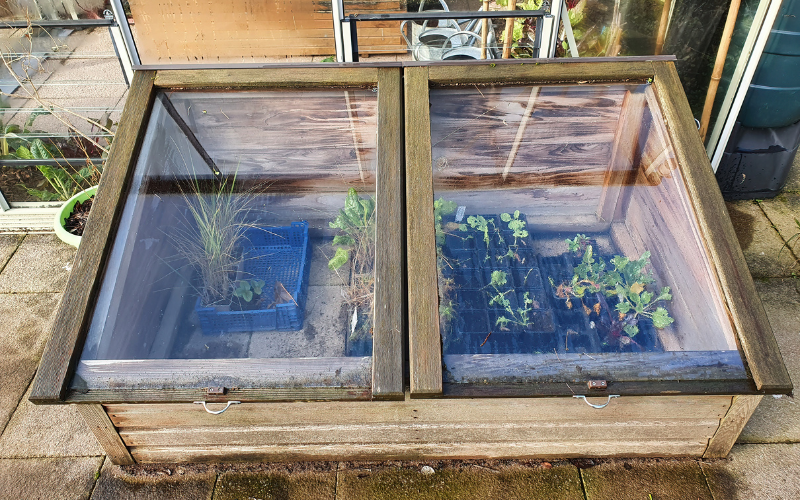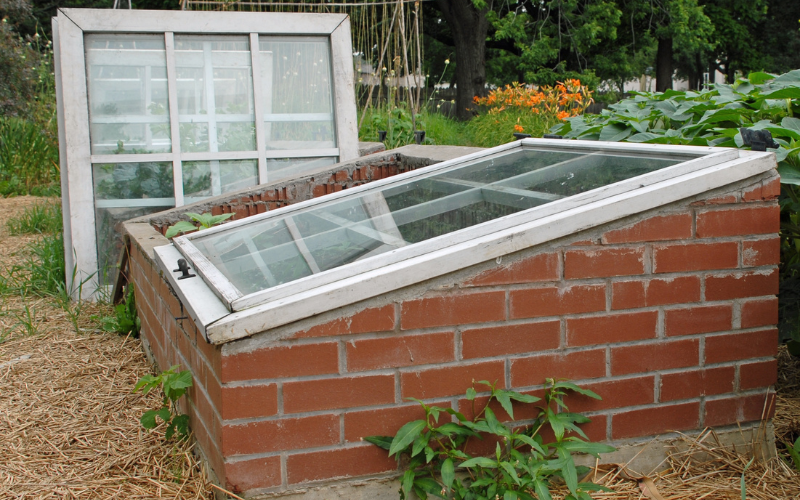As summer turns into fall and the temperature drops, many gardeners reluctantly hang up their gardening gloves and bid farewell to their thriving vegetable gardens. Cold weather doesn’t have to signal the end of your vegetable garden but the start of your cold weather vegetable garden.
Cold hardy vegetable plants are ideal for your cold-weather vegetable garden but even vegetables that thrive in the cold can benefit from some protection, especially during harsh winters. Here’s where cold frames come in handy. Cold frames can help you extend your growing season well into the colder months of the year and help you enjoy fresh produce all year round.
In this blog post, we’ll explore what cold frames are, how they work, and the numerous benefits they offer your vegetable garden.
What Are Cold Frames?
Cold frames are simple, low-cost gardening structures used to to protect vegetable plants from sudden temperature dips and drastic changes in the weather when growing cold hardy vegetables and herbs during spring, fall, or even winter.
These structures consist of a rectangular or square base constructed using wood, metal, or concrete blocks with a clear or transparent cover made of glass or plastic, which is attached to one side of the base with a hinge.

How Do Cold Frames Work?
The cover of a cold frame is usually sloped to capture and trap as much sunlight as possible. The slope also stops rainwater or snow from collecting on top.
Cold frames are usually placed directly on the ground or on top of a raised bed over garden soil. This allows plants to be planted directly inside them and helps regulate the temperature of both the soil and the air surrounding the plant.

The hinged cover can be propped open or closed to regulate temperature to prevent overheating on sunny days. The cover can be kept slightly open to provide just enough air circulation for the plants inside.
What are the benefits of using cold frames in a home vegetable garden?
- Low cost: Cold frames can be purchased or built at a low cost making them ideal for home vegetable gardeners who would like to grow vegetables in the colder months.
- Needs only a little space: Home vegetable gardens are usually too small to accommodate even a small greenhouse. This makes cold frames an ideal way to heat the soil and air around your vegetable plants during cold weather.
- Energy efficient: Unlike heating mats or lamps that are used indoors to grow vegetables in cold weather, cold frames are highly energy-efficient because they use solar energy to heat the air and soil.
- Protection from pests: Cold frames act as a physical barrier, preventing pests and wildlife from damaging your crops. This can reduce the need for other physical barriers to keep pests away or the use of chemical pesticides to get rid of pests.
- Protection from harsh weather: Even the most cold-hardy vegetables can be damaged by extremely harsh cold weather and could use some protection. Installing a cold frame or having one ready in case the weather suddenly changes can help you protect your vegetable plants.
Tips for Installing and Using Cold Frames Effectively
- Put the cold frame where it gets lots of sunlight, ideally facing south to catch as much sun as possible.
- Make sure the ground under the cold frame is flat so that water doesn’t gather inside.
- Build the frame using strong materials like wood, aluminum, or PVC to make it sturdy and tough.
- When it’s warm, open the cold frame’s lid to avoid it getting too hot, and make sure it can stay open.
- Use a thermometer inside the cold frame to check the temperature and decide when to open it up or add more heat.
- Keep it warm at night by putting insulating stuff like straw, bubble wrap, or foam around the sides and bottom.
- Use good soil that drains well inside the cold frame and make it better by adding compost or organic stuff.
- Pick plants that can handle the cold weather.
- Watch how wet the soil is because cold frames can dry out fast. If needed, water gently with a spray or watering can to avoid hurting young plants.
- On really cold nights, put extra insulation like blankets or row covers inside to protect plants from frost.
- Keep it clean and tidy so sunlight can get in properly.
- Look for damage on the frame or cover and fix it quickly.
- When it gets warmer, take off the cold frame cover or store it away.
- Change where you plant things to keep the soil healthy and prevent diseases inside the cold frame.
- Write down what you do in a journal to remember when you planted, what kinds of plants you used, and how well they grew so that you can improve or repeat the same.
In conclusion, cold frames are an invaluable addition to a home vegetable garden, offering the opportunity to enjoy fresh produce year-round and protect your plants from harsh weather conditions. Using them properly involves regularly monitoring your plants and the microclimate inside the cold frame and the structure itself to make sure that the most ideal growing conditions are provided for your vegetable plants.


